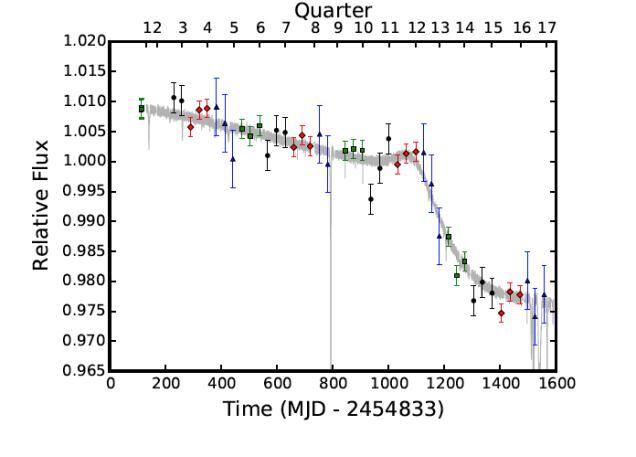A star known as KIC 8462852, or Tabby’s star, is currently the weirdest star in the universe and its getting weirder. So weird in fact that it could be an alien civilization which hasn't been ruled out.
The reason why it is so weird is that for the past few months, a team of researchers have noticed that its light seems to have dipped in brightness in very bizarre ways. Explanations for this currently include a cloud of comets and orbiting "alien megastructures".
See also: How To Make Your Own Star Trek Style Tractor Beam! [Video]
The overall brightness of this star has been flickering so much that one astronomer has even speculated that it couldn't be caused by anything other than an extraterrestrial construction project! Looking back in time though at historical records reveals that it has been fading now for a century, but more rapidly over the last four years – deepening the mystery.
"It seems that every time someone looks at the star, it gets weirder and weirder," says Benjamin Montet at the California Institute of Technology, who led the study.
The star was originally spotted by Kepler, NASA's space telescope which monitored about 100,000 stars between 2009 and 2013. Any dip observed in the stars light could mean that it is a sign that an exoplanet has passed in front of it. Dips in light from stars are observed regularly, but only block about 1 per cent of the light originating from the star. Such observations have revealed thousands of exoplanets.
However, the thing that makes KIC 8462852 so weird, is that its light dipped by as much as 20 percent and didn't conform to any regular time intervals according to New Scientist.
Three types of dimming
During the first 1000 days of the Kepler mission, the star's light decreased by about 0.34 percent a year. Over the next 200 days, it dropped by another 2.5 percent and then started to level out a bit. Unfortunately there is no explanation that fits perfectly for these three types of dimming. There are some explanations such as a swarm of comets orbiting the star to an intervening cloud, but these don't fit all the data.
Aliens?
Maybe it is an alien megastructure, which cannot be ruled out. However, even Jason Wright, an astronomer at Pennsylvania State University who came up with the theory, admits that it is a last resort.
In the meantime astronomers are continuing to monitor the star for a year after securing $100,000 via crowdfunding. They hope that the star will dim drastically so that they can swing different observatories at it. If they can catch the transits at different wavelengths, then they should be able to nail down what is interfering with the star, which could be a swarm of comets, an alien megastructure or something else not yet thought about.
KIC 8462852 brightness with time. Credit: Montet and Simon.
